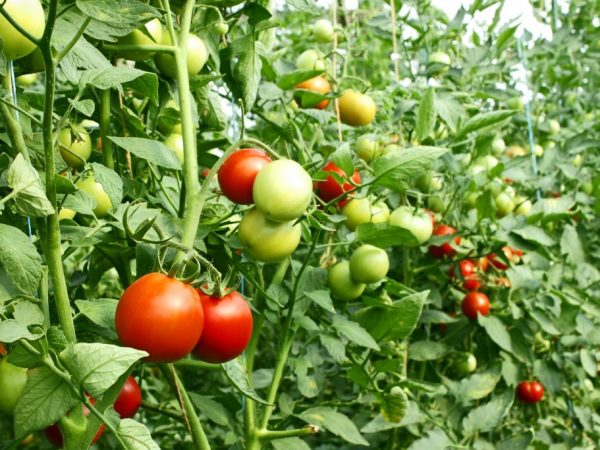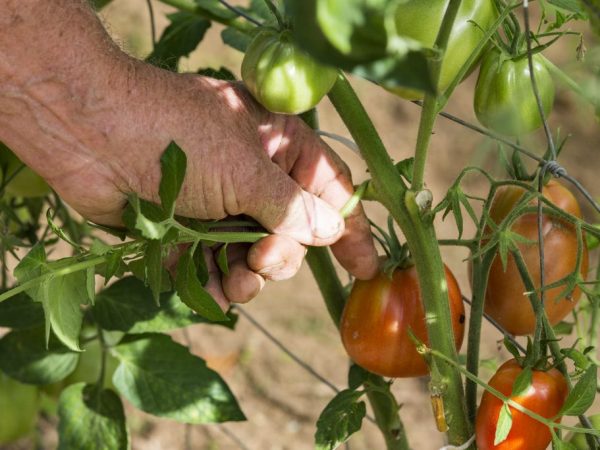Stages of tomato formation
The formation of tomatoes would be absolutely irrelevant if the summer lasted not three months, but at least six months. Today we will talk about how to form tomatoes correctly, why the formation process is so important for a good harvest.

Stages of tomato formation
When the formation begins
Based on the norms, you need to form tomato bushes at the beginning of summer, that is, in June. The fact is that it is at this time that the Solanaceae family forms the first lateral shoots, which must be removed, which will allow directing the entire potential of the plant in the right direction, thus, the formation of a tomato bush is an obligatory stage.
If you skip such an important stage as the formation of tomatoes in a greenhouse or open field, there is a risk that thickets will grow in the garden, in which it will be extremely difficult to find fruits. The fact is that stepchildren are formed on each stem, there is a flower in each stepchild, and if there are too many of them, the plant will simply stop bearing fruit. That is why the first stage in the formation of tomato bushes in a greenhouse is pinching, the same applies to growing in open ground.
Grassing tomatoes
Grasshopping is an integral part of the formation of tomato bushes. After the pinching procedure, you will be able to control the growth of tomatoes.
The only exception is low-growing varieties of tomatoes, they grow in such a way that the shoots ripen without human assistance. However, it should be said that undersized tomato species are more suitable for growing in open ground than in a greenhouse.
Stepsons removal scheme
Experienced gardeners say that the correct scheme for the formation of a tomato should look like this:
- The first removal of stepchildren should be carried out 10-14 days after the seedlings have been planted. Further, re-processing every 9-14 days, so that the shoots do not have time to grow after planting;
- When forming the main stem, you need to take the one on which the very first brush with a flower is located
- Shoots formed between the central stem and the leaves on the sides should be removed at the stage when they have developed to a length of about 6 cm
If there are extra shoots, it is worth refusing to break off, prefer neat pruning, and the best time is uro, since the plant is saturated with morning moisture and dew.
Shoot removal procedure
In order for the pinching not to go unnoticed and to be beneficial, it is worth cutting off the stepsons in such a way that a stump about 3 centimeters high remains in the place of the cut. We will find out what the features of the tomato formation scheme are, depending on the number of stems.
Formation into one stem
If you preferred the formation of a tomato bush in a greenhouse in one stalk, then absolutely all stepchildren must be removed, without making exceptions. The fact is that new side shoots will take too much strength for their growth and development, preventing the plant from bearing fruit. The same principle applies to outdoor cultivation.
Moreover, it is worth getting rid of those shoots that grow in close proximity to the root, they are often half hidden in the ground. In total, no more than 3-5 flower brushes should remain on one main trunk, this is the only way to form tomato bushes that will be able to bring a good harvest.
Forming into two stems

Removing the tip stimulates rapid ripening of the fruit
We will learn how to form tomatoes when choosing a two-stem type. If you are forming a tomato bush in a greenhouse or just on a garden bed with two stems, then you need to leave the same shoot that is located immediately under the very first flower brush, as well as in close proximity to it. The stepson who served as the basis for the formation of the second trunk will also produce shoots, the lateral shoots of which will need to be removed after development.
Regardless of how many stems your plant will have after forming, to harvest tomatoes as early as possible, it is worth removing the top on the stem or stems. In addition, it is important to tie tomato bushes to pegs that are driven into the ground, or use polycarbonate trellises for these purposes. This recommendation remains valid even when tomatoes are being formed in the greenhouse.
Topping
After the formation of the tomatoes has been completed, it is worth proceeding to the next step - pinching. This must be done in order to stop the growth of the tops in height in time, and also so that unnecessary ovaries are not created. This is especially important when tall tomatoes are formed.
Pinching also has another name - vershkoving, it is customary to perform it in July, preferably in the second half of it. It is recommended to leave 2-4 leaves above the uppermost brush, after which the top of a tall plant should be cut off.
Pruning leaves
When it comes to trimming the leaves, gardeners do not have a consensus on how much foliage should be removed and at what time it is best to carry out the procedure. Some of them believe that after the tomato bush is formed, it is worth leaving a few leaves to create a shade to protect from direct sunlight.
Other gardeners say that such an intervention can harm the plant, as it will change the natural process of metabolism and development of the plant. They recommend pruning only those leaves that have withered and turned yellow.
Formation of bushes by type of variety
The formation of tomato bushes will have its own characteristics depending on what type of plant is being formed. It is worth saying that tomatoes can be roughly divided into three varieties, namely:
- Superdeterminant
- Determinant
- Indeterminate
Let's move on to a description of how the formation of a tomato bush takes place, depending on its type:
Determinant
A distinctive feature of the variety is that the first inflorescence is too low. After the seedlings are placed in the soil after planting, it is worth forming a flower brush at the level of 6-8 leaves. As for the inflorescences, they are located after 2-3 leaves.
Speaking about the distinctive features, it should be said that the determinant varieties of tomatoes stop the formation of brushes by 4-6 brushes. However, due to special biological abilities, it may be that the inflorescences will not stop their formation.
To form a determinant bush, it is worth saying that the growing point should be on the lateral shoot, this will have a positive effect on the fruiting process.In addition, it is recommended to carry out simultaneous pinching and tying the plant to the support. This will make it possible to get rid of all unnecessary stepsons until the first brush with shoots appears. Manual removal of stepchildren is recommended so as not to harm the plant. It is worth saying that the determinant varieties show the best fruiting indicators in the open field than in the greenhouse.
Indeterminate
The main distinguishing feature of indeterminate tomato varieties is that they are formed into only one stem. To maximize the yield, it is worth removing all side shoots. Moreover, the first brush should be located as high as possible, namely above the 10-14 sheet. Stepsons develop at the height of the tenth leaf. In this case, the appearance of new sheets begins when the development of the first brush with flowers ends.
Gardeners recommend leaving the brush located on the stepson of an indeterminate type, only after that pinch the branch.
As for the frequency of pinching of indeterminate plants, it should be carried out at least once every seven days.
Superdeterminant
This type of the nightshade family is known for its relatively weak growth, the bush grows to a maximum of 70 centimeters in length, if you form tomatoes in a greenhouse, it is also customary to talk about its early maturity. The first flower usually appears after the growth of the sixth leaf, all the next ones emerge through the leaf. There are several ways to form superdeterminant varieties:
- Single stem. Lateral shoots are formed a month before the last crop is harvested;
- 2 stems. This option involves the formation of a second stem from the stepson, which is located under the inflorescence
- Three-stemmed. In this case, the third stem is formed from the leaf on the second.
Now you know how to form tomatoes correctly, you understand that in real conditions, without the process of forming tomatoes, growing a vegetable would not be so profitable. Finally, it is worth saying that all work related to the formation of a tomato bush is recommended to be carried out in warm weather, as well as in the absence of sediment, this minimizes the risk of infection in the plant.


